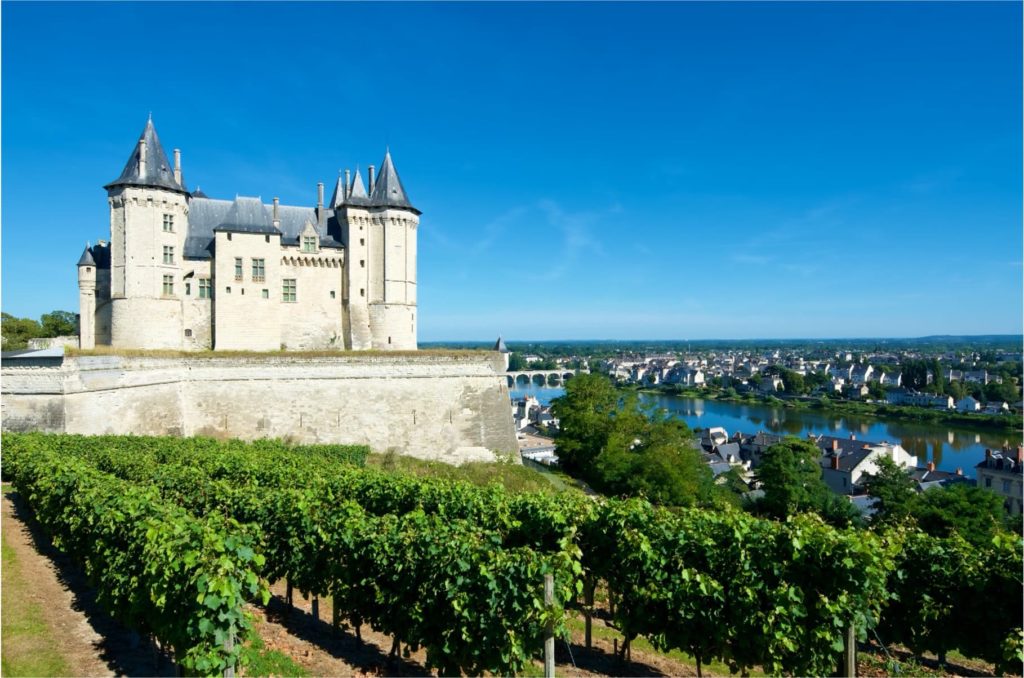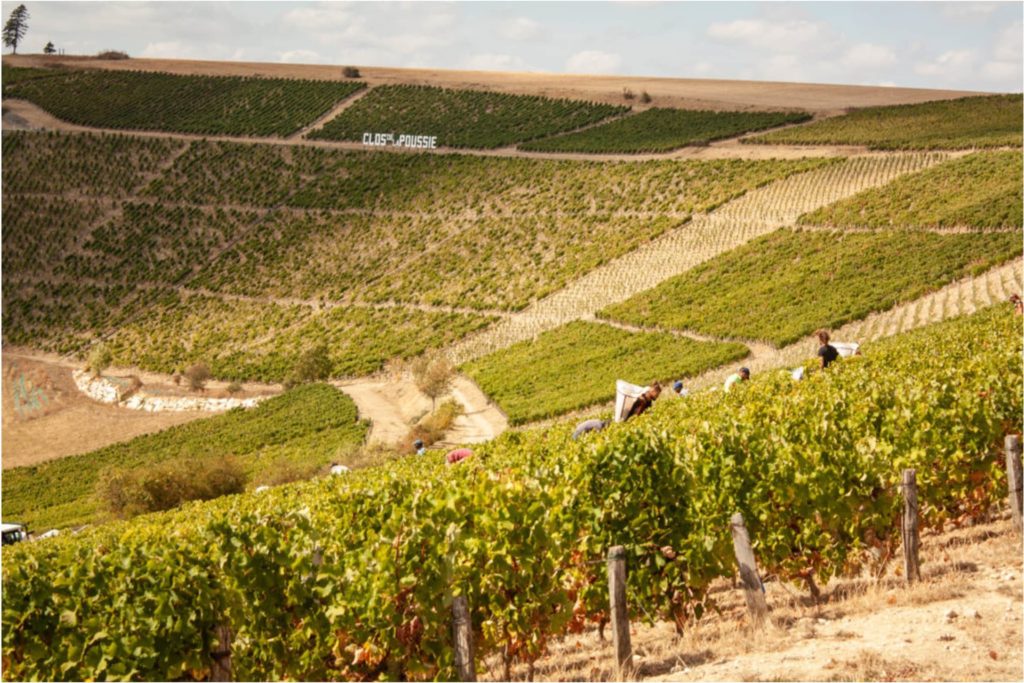
An insider’s guide to white wines from the Loire Valley

The Loire Valley and New Zealand’s Marlborough wine region share one thing in common. Internationally renowned, both vineyards are overwhelmingly associated with the fresh and aromatic Sauvignon Blanc grape. Yet the ‘Garden of France’ is perhaps the most diverse wine zone in Europe, offering many different styles and price points. They range from the brilliantly refreshing Muscadet to Pinot Noir wines of Menetou-Salon.
Click on a link to jump to that section:
An overview of the Loire Valley
Situated in north-western France around France’s longest river – The Loire river. The valley is the country’s third-largest region, after Bordeaux and Burgundy. It remains a very important and sizeable producer of fine wine, from sparkling Vouvray to Chenin Blanc and Saumur. The French wine zone has traditionally been divided into four key sub-regions: Lower Loire (maritime region); Middle Loire; Central Loire (flanking Burgundy); and Upper Loire. As a result, there are significant variations in climate, soil and tradition, which affects the finished wine.
There are unifying characteristics among this broad spectrum of white wines. Regardless of the appellation, they are always refreshing, aromatic, well-made and rarely expensive. Over half of the region’s annual production is dedicated to white styles, often based on a single grape variety.
Key grape varieties
- Melon de Bourgogne: The white grape of Muscadet in the Pays Nantais is Melon de Bourgogne.
This grape variety is a distant relative of Chardonnay. The delicately saline, acidic wine has notes of citrus
and green apple which are its trademark.
- Chenin Blanc: Highly adaptable and versatile, the Chenin Blanc grape of the Middle Loire
produces sweet wines, in addition to very complex and age-worthy dry whites. The grape produces aromas of honey,
quince and stone fruit.
- Sauvignon Blanc: New Zealand’s most iconic export is indigenous to the Loire Valley wine
region, where it produces piercingly aromatic wines in Sancerre and Pouilly-Fumé. The signature scent of
gooseberry is universally adored by oenophiles.
- Chardonnay: Appellation rules for Loire wine do not generally permit using Chardonnay,
However, the signature white grape of Burgundy thrives in the Loire, producing vibrant wines with good acidity
and flavours of citrus and honeysuckle.
Key sub-regions
Anjou
South of the city of Angers is one of the Loire Valley’s most eclectic vineyards. It is famous for Rosé d’Anjou but red wine (from varieties including Cabernet Franc and Cabernet Sauvignon) and high-quality white wines are also made here. Most white wine labels are based on Chenin Blanc, made into both dry and sweet wine styles. The continental climate and the drying winds, straight off the Atlantic, ensure that acidity levels remain vibrant in the grapes.
Anjou Blanc and Savennieres are the leading dry appellations, producing concentrated and structured Chenin Blanc, often matured in oak. They rival the best of Sauternes in quality, but not in price. However, it is the dry whites of Coulée de Serrant that attract the greatest hype.
Saumur
The beautiful town of Saumur is the Loire Valley’s sparkling wine capital. Saumur Brut offers exceptional value; it is predominately based on Chenin Blanc (a certain percentage of Chardonnay can be included), made using the traditional method of secondary fermentation in bottle. Like Champagne, it boasts an unrivalled ability to refresh your palate. Crémant de Loire is the other major sparking appellation, with stricter rules on yield. There is a plentiful supply of bubbly of the Loire, which keeps prices very reasonable.
Eastern Touraine
The Middle Loire is an Instagram paradise, but more importantly, the Eastern Touraine sub-region, centered on the city of Tours, is celebrated for its distinctive dry and sweet wine types. In addition to the generic Touraine designation, there are several delimited appellations, including Vouvray and Montlouis.
Meanwhile, Vouvray stakes its reputation solely on Chenin Blanc. The gentle slopes towards the Loire River are covered with a tuffeau topsoil and porous limestone responsible for the vibrant acidity of the wine. Botrytis sweet wines from Vouvray can last for decades, becoming incredibly complex as they age in bottle.
Montlouis, just across the Loire River from Vouvray, is one of the Loire’s undiscovered appellations. The dry Chenin Blanc wines are similarly excellent, produced from grapes grown on clay-limestone soils. The pleasing minerality, inherent to the best labels, is a characteristic also found in the sparkling wines of both Vouvray and Montlouis. They compete with Anjou for the title of France’s best value fizz.

Key white wine appellations
Muscadet
A flagship wine of the Lower Loire; only Melon de Bourgogne can be used to make the style. It is grown on a mixture of granite, schist and gneiss terroir, in a maritime climate. There are four Muscadet appellations: Cotes de Grandlieu, Coteaux de la Loire, Muscadet and Muscadet Sevre-et-Maine. It is said that the finest expressions are made in Cotes de Grandlieu, noted for their superior ripeness and mouthfeel.
Muscadet was traditionally produced relatively quickly, bottled straight from the fermentation tank, without any filtering. This process, known as sur lie, imbues the wine with a richer texture, due to the interaction between the wine and dead yeast cells. However, in recent years, growers have been ageing their cuvées for longer, experimenting with maturation in wood and amphora.
Pouilly-Fumé and Sancerre
The Loire Valley offers a distinct expression of the grape, with more obvious minerality, higher acidity and impeccable freshness. The vineyards are found at the eastern end of the Lower Loire Valley – Sancerre is located on the left bank, while Pouilly-Fumé faces directly opposite on the eastern slopes.
At first glance, the two wines are indistinguishable. Deeply aromatic and racy, with a signature scent of gunflint and gooseberry. However, the differences are attributed to their respective soils. The soils of Sancerre are rich in limestone, while the soils of Pouilly-Fumé have a high proportion of clay and silex (flint). Pouilly-Fumé is often slightly riper and more perfumed than its neighbor; Sancerre offers a fuller structure with more weight. In recent years, certain growers in both appellations have flirted with oak maturation. If handled carefully, French barrique can really enhance the texture and mouthfeel of Sancerre and Pouilly-Fumé.
Enjoying Loire Valley white wines
There is a Loire Valley white wine for every occasion and budget. Muscadet quenches the thirst and stimulates the palate. Sparkling Vouvray and Saumur perform a similar role. If you seek an affordable aperitif, then look no further.
Local tradition, however, suggests pairing Loire Valley whites with local dishes. Sancerre and Pouilly-Fumé are exquisite when served alongside the goat cheese Chavignol. Freshwater perch and trout sing alongside the Chenin Blanc wines of Anjou. The most decadent marriage, though, is surely tarte tatin and dessert wines from Bonnezeaux. There is nothing quite like it.
Related Pages
An insider’s guide to Sancerre
An insider’s guide to red wine from the Loire Valley




